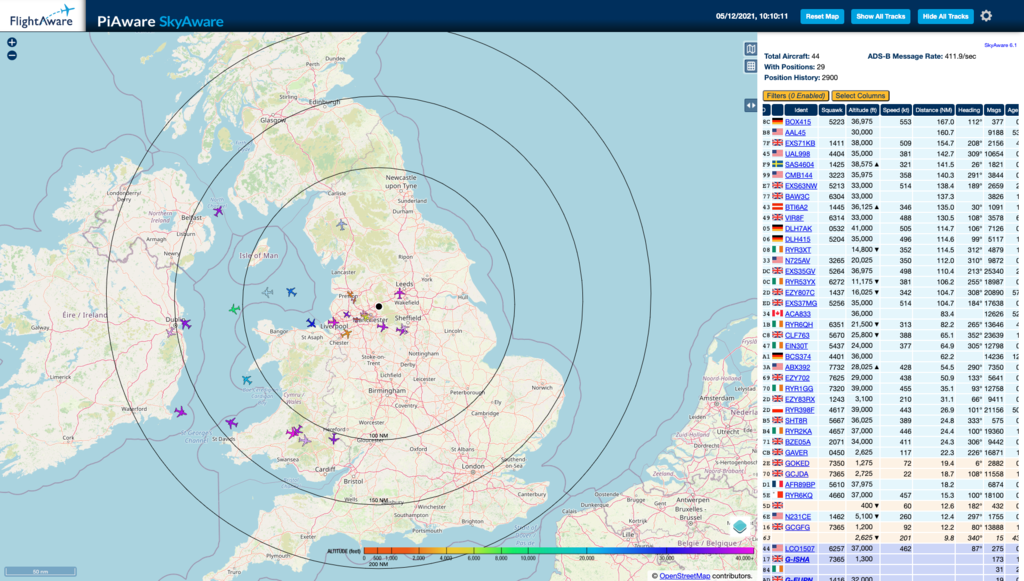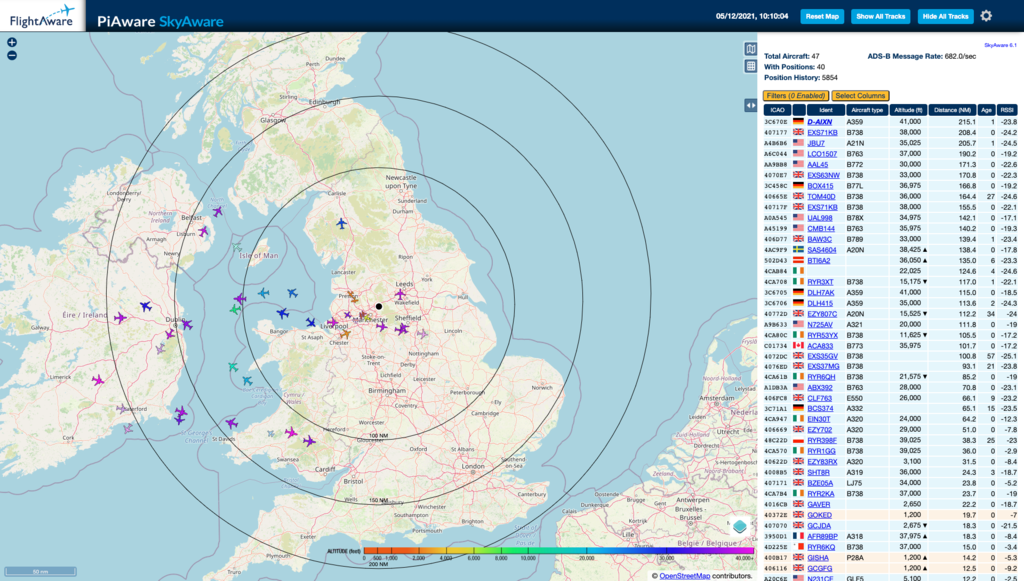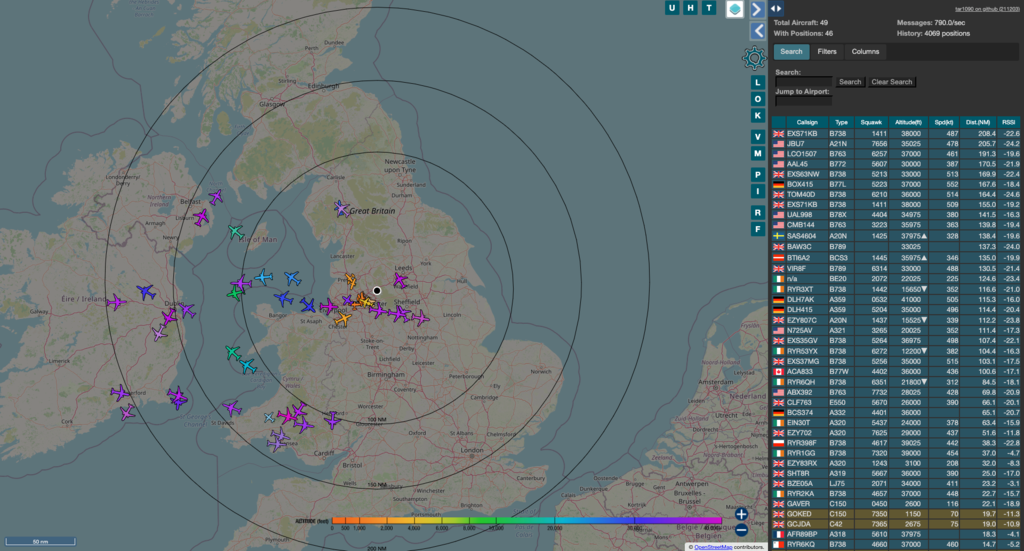How-to: combine multiple ADS-B feeds into one display
How to draw multiple dump1090-fa instances into a single map and table using combine1090
While comparing amendments to my antenna designs by running two antennas side-by-side I’ve been interested to know whether the aircraft positions received by the lesser-performing antenna’s dump1090 are a subset of those received by the better-performing antenna’s dump1090 or whether some of them are aircraft not ‘seen’ by the better-performing one. That became especially useful to know when comparing different types of antenna – eg a collinear alongside a Yagi-Uda.
I tried a few ways – switching quickly between tabs was one way, scripting some database routines to list the various aircraft (very clunky and a lot of work for little output), etc – but the easiest is certainly to simply see how many aircraft are seen by dump1090-A, dump1090-B and the overall combined total. For example in the screenshots below there are 44 aircraft seen by A, 47 by B and 49 in total – so B is not just seeing an additional 3 aircraft, there are some unique in each.



For info, at the point the above were taken, dump1090a had antenna C and dump1090b had antenna D.
Achieving this using combin1090 was easy with this process created by once I had the two working dump1090 installations. Thanks to weidehopf for all the work that obviously went into this – it does exactly what I needed and has some great features that I’ve been unable to get dump1090 to do itself.
I allowed the script to do everything – I take weidehopf’s point about running unknown scripts but I have nothing else running on this pi, would easily be able to re-install and had a good look through what the script was going to do before I ran it.
After having set up dump1090-mutability, created feeds to the usual flight sites and then, eventually, upgraded to dump1090-fa when the mutability project ended I then followed these instructions:
Log into the pi using ssh and execute the following commands
wget https://raw.githubusercontent.com/wiedehopf/combine1090/master/install.sh
sudo bash install.sh
When those have completed edit the config file
sudo nano /etc/default/combine1090to point combine1090 at the two dump1090-fa instances running on the two pi’s by updating the SOURCES line so it reads
SOURCES= 127.0.0.1 dump1090aMy two dump1090-fa instances run on hosts called dump1090a & dump1090b and I’ve installed combine1090 on dump1090b.
Once updated, restart the service
sudo systemctl restart combine1090and point the browser at the new page that draws both sources into one map and table
http://dump1090b/combine1090Adding an instance running as a second dump1090-fa on one host
After getting the above running I added a second dongle on one of the hosts (details of how that was done are here) and then combined that into the single map, by editing the combine1090 config file:
sudo nano /etc/default/combine1090to point combine1090 at the second dump1090-fa instance presenting its data at the same IP address as one of the original ones, but on a different port, by adding the following line
CUSTOM=127.0.0.1:31005The port is set in the setting up of the second instance and can be found in the “networking options” block of the config file at /etc/default/dump1090-fa-2
#
# Networking options
#
# Port to listen on for Beast-format output connections. 0 disables.
BEAST_OUTPUT_PORT="31005"Once updated, restart the service
sudo systemctl restart combine1090Useful links
https://github.com/wiedehopf/combine1090
https://discussions.flightaware.com/t/changing-from-dump1090-mutability-to-dump1090-fa/33578